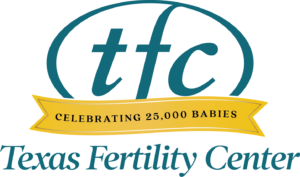
Fertility preservation for breast cancer patients is possible
Thousands of women are diagnosed with breast cancer each year. Thanks to advances in cancer treatments, the five-year survival rate for breast cancer patients is close to 90%. With such a high survival rate, patients can think about thriving after cancer, rather than merely surviving the disease. Many breast cancer patients don’t realize that it’s possible to preserve their fertility before, and sometimes even after, starting cancer treatments.
It’s time to start talking about fertility preservation for breast cancer patients
Women who have been diagnosed with breast cancer could later build families if they receive the information and treatments they need. The American Society for Reproductive Medicine and the American Society of Clinical Oncology both recommend that any woman who is receiving treatments that could harm her fertility be referred to a fertility specialist before beginning treatments. However, in one study, only 60% of breast cancer patients receive counseling about how cancer treatments could affect their ability to become pregnant, and just 13% of those patients received a referral to a fertility specialist.
Recommendations for women who have been diagnosed with breast cancer
Our fertility doctors have recommendations for patients who have been diagnosed with breast cancer or any other form of cancer. It’s important that patients discuss with their oncologist the effect their treatment will have on their fertility. Some types of radiation and chemotherapy are more harmful to the reproductive organs. It’s not always possible to avoid gonadotoxic treatments, but patients need this information to make informed choices about their family-building plans going forward.
When it comes to starting fertility preservation after a cancer diagnosis, it’s best to start as soon as possible. As soon as a patient is diagnosed, she should get a referral and visit a fertility specialist. However, it’s never too late to have a conversation about fertility preservation, even if the patient has already started treatment. There are many different ways of proceeding with fertility treatments and building families. Most individuals and couples have more options than they think.
Who is a candidate for fertility preservation?
Most cancer patients can safeguard their fertility for the future. The cancer type and stage of the disease, as well as where you are in your course of treatment will factor into any fertility preservation options. TFC will partner with your oncologist to deal with any potential issues, such as if hormone therapy will potentially accelerate cancer growth or if a delay in treatment could negatively impact your ultimate outcome.
How do you begin the process?
As soon as possible, patients need to let their oncologists know about their desire for fertility preservation. At that point, you should contact TFC. Our fertility center will make your case a priority so that you will experience the shortest possible delay in your cancer treatment.
Breast cancer patients have a couple of options that can enable them to build or expand their families after recovery, including:
Oocyte (egg) cryopreservation: For years, technology has allowed for sperm and embryo freezing. Until recently, egg freezing wasn’t a viable option. With unfertilized eggs, ice crystals could form during the freezing process, causing damage to the eggs as they were frozen or thawed. Vitrification, a flash-freezing process, has changed all of that, resulting in a significant
improvement in pregnancy rates. Egg freezing is a good option for young patients as well as for those who aren’t in a relationship.
Embryo cryopreservation: When sperm and egg join during fertilization, an embryo forms. Embryo cryopreservation involves combining egg and sperm in a lab and then freezing the resulting embryos for future use. As with oocyte freezing, vitrification has made a huge difference here as well. Embryo vitrification always results in higher pregnancy/delivery rates than oocyte vitrification, but this option is only available to couples or women who are using donor sperm.
Fertility preservation for breast cancer patients involves ovarian stimulation and then egg retrieval in a process similar to IVF (in-vitro fertilization). During the stimulation phase, patients take fertility medications to facilitate the growth and development of multiple eggs. Once the follicles mature, the physicians at Texas Fertility Center can retrieve the eggs for either vitrification or fertilization with sperm.
If you have been diagnosed with breast cancer or any other form of the disease, contact us to learn how our San Antonio fertility center can help preserve your fertility.



